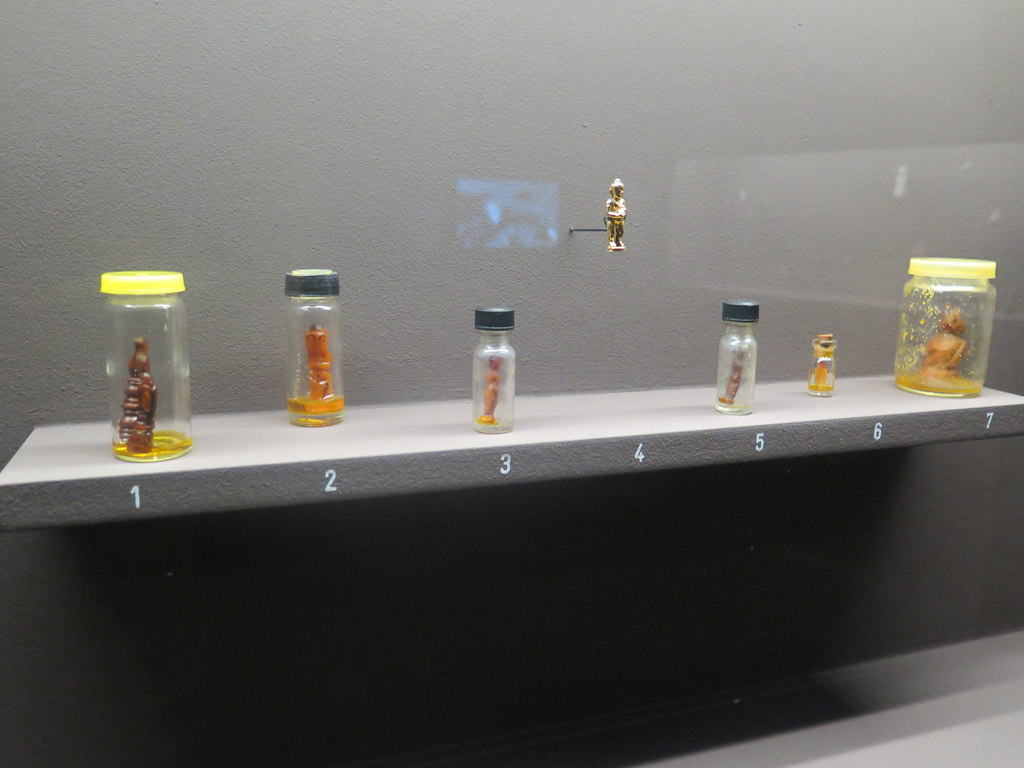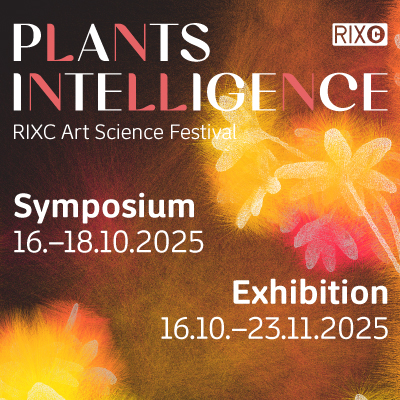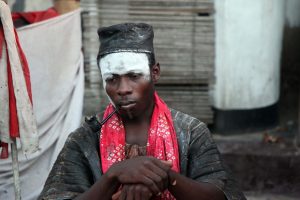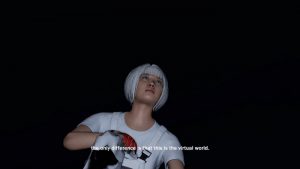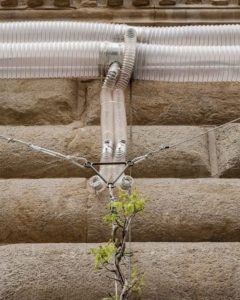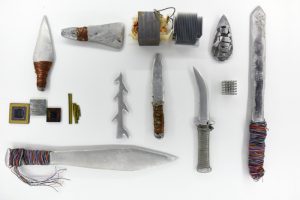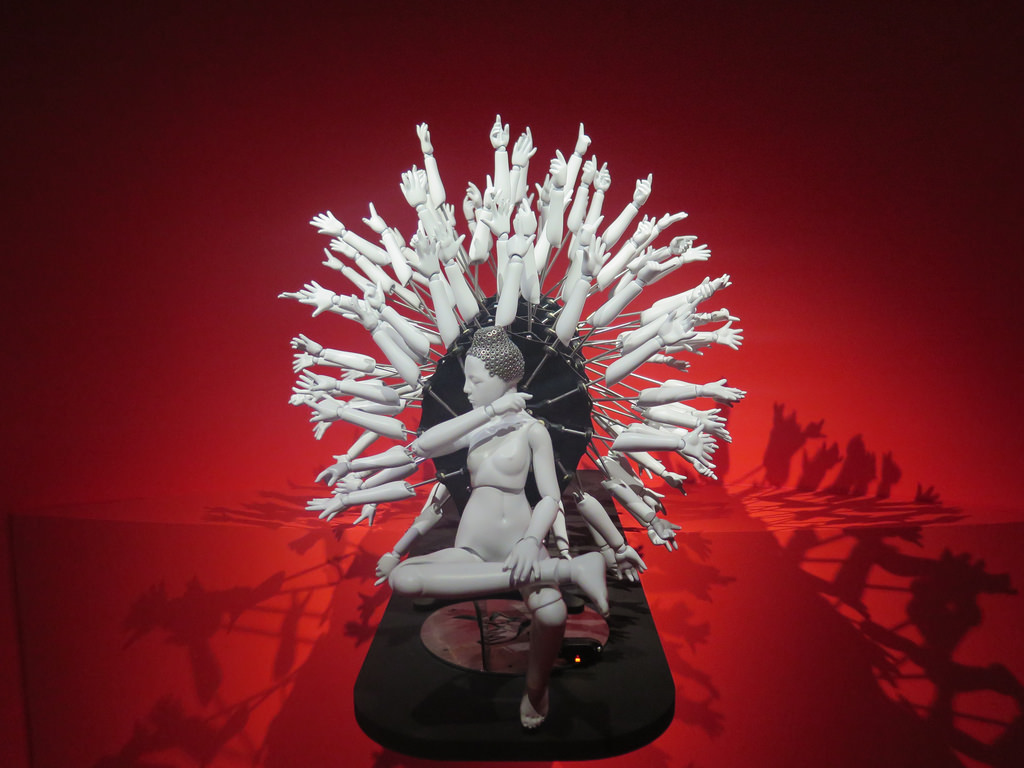
Wang Zi Won, Mechanical Avalokitesvara, 2015
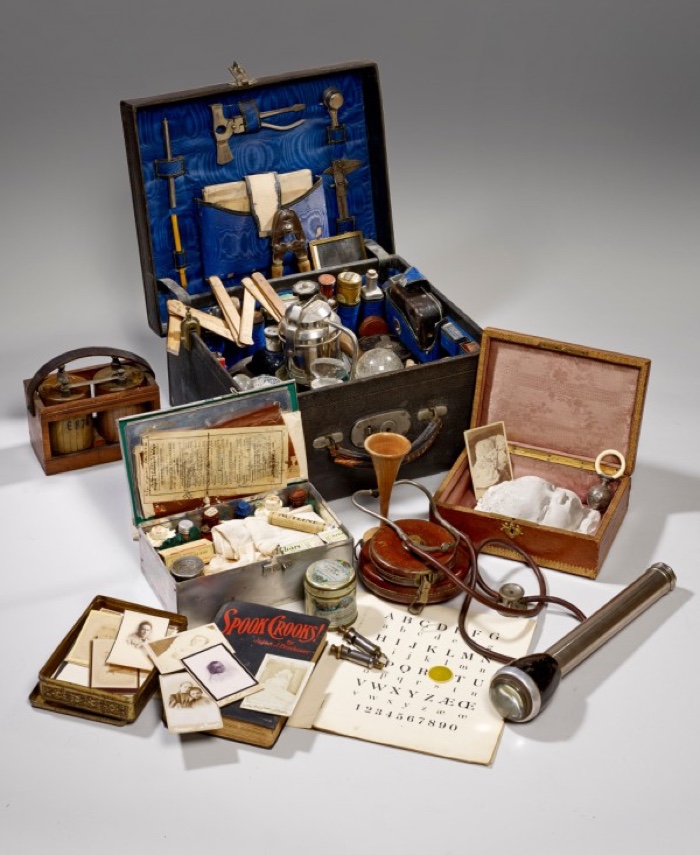
Ghost Hunter suitcase and alphabet for ouija, 1926-1940 Surnatéum, Bruxelles. Photo Claude Germain
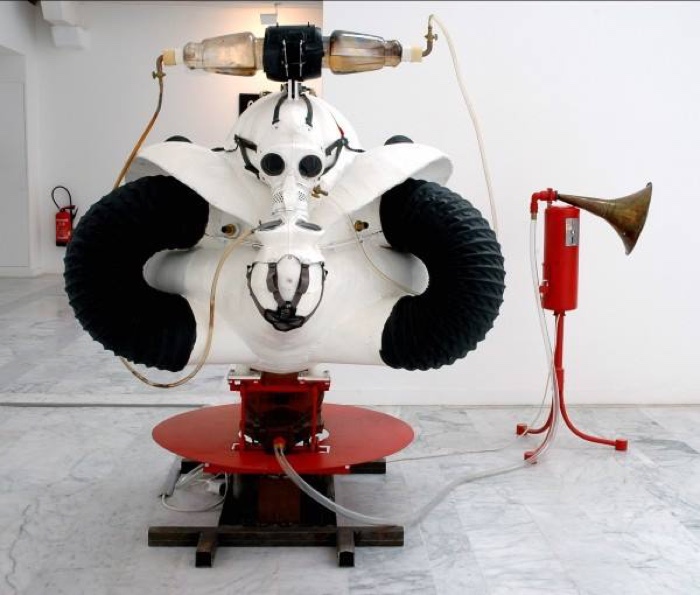
Kenji Yanobe, Sweet Harmonizer II , 1995
The Musée du Quai Branly in Paris is probably one of the few places in the world where you can see post-apocalyptic outfits, ghost hunter instruments, divination robots, Nigerian monoliths bearing minimal human features, Mezcala anthropomorphic figurines, the egg of a titanosaurus, Japanese Bunraku puppets and other historical or contemporary artifacts in the same exhibition.
Persona. Strangely Human lines up over 200 objects and videos to probe how ancient and contemporary cultures infuse life and persona into things.
Many objects have a status more similar to that of a person or a creature than that of a simple object. Works of art – Western or non-Western, popular or contemporary –, or high-tech products – robots, machines, etc. – are regularly endowed, in their use, with unexpected capacities for action, which render them almost people. Like a child devoted to its cuddly toy or someone who curses their computer or mobile accusing it of being incompetent or stubborn. Like the shaman who calls on the spirits through a statuette resembling the gods.
The backdrop of the exhibition is of course the ongoing debates regarding transhumanism, artificial intelligence and the increasingly blurry borders that separate humans from machines. But what makes the exhibition of the Musée du Quai Branly original and different from the shows i usually cover is that its approach is mostly anthropological. The curators are anthropologist Emmanuel Grimaud, ethnologist Anne-Christine Taylor-Descola, anthropologist Denis Vidal and art historian Thierry Dufrêne. Together they gather artifacts from all over the world to explore questions such as: How does the inanimate become animate? How do people establish an unusual or intimate relationship with objects?
Persona, Étrangement humain (trailer)
The exhibition investigates the human in the non-human through 4 different paths.
The first one looks at ‘unidentified presences’, the ones that we think we can detect in a vague shape, or an unexpected sound. It seems that, as humans, we are ‘wired’ to anthropomorphise, to identify life where there is objectively only a bunch of abstract shapes.
In 1944, psychologists Fritz Heider and Marianne Simmel showed to subjects a short animation of independently moving geometric shapes. They found that most people couldn’t help but attribute intentional movements, personalities and goal-directed interactions to the shapes. The attribution takes place in the absence of common social cues like body language, facial expressions or speech. The experiment shows how humans have a spontaneous tendency to attribute feelings and thoughts to barely anthropomorphic shapes.
Fritz Heider & Marianne Simmel, Experimental study of apparent behavior, 1944
In 2008, the BBC re-created a controversial sensory deprivation experiment. Six people were taken to a nuclear bunker and left alone for 48 hours. Three subjects were left alone in dark, sound-proofed rooms, while the other three are given goggles and foam cuffs, while white noise is piped into their ears. The volunteers suffered anxiety, extreme emotions, paranoia and significant deterioration in their mental functioning. They also hallucinated and thought they could see or hear thousands of empty oyster shells, a snake, zebras, tiny cars, the room taking off, mosquitoes, fighter planes buzzing around.
BBC, 48 Hours of Total Isolation (The volunteers begin to hallucinate)
Meanwhile in Thailand, people adopt Kuman Thong, or “Gold Baby.” The little household effigy contains the spirit of a mythical child. Its owner has to care for it as if it were a real child, show it affection and talk to it every day. A bit like you would do with a tamagotchi.
A second section of the show explores the persons that you might want to ‘detect’ and communicate with: the ghosts, the spirits, the apparitions, etc.
I wasn’t expecting to find Thomas Edison there. At the end of his life, the famous inventor was said to have been working on a device for communicating with the dead. The “spirit phone” or telephone to the Dead would have enabled paranormal researchers to work ‘in a strictly scientific way.’
The idea for the device came through a correspondence between Edison and Sir William Crookes. The British inventor claimed to have captured images of spirits on photographs. These images allegedly encouraged Edison. The machine never saw the light of the day. Hence the skepticism that surrounds it.
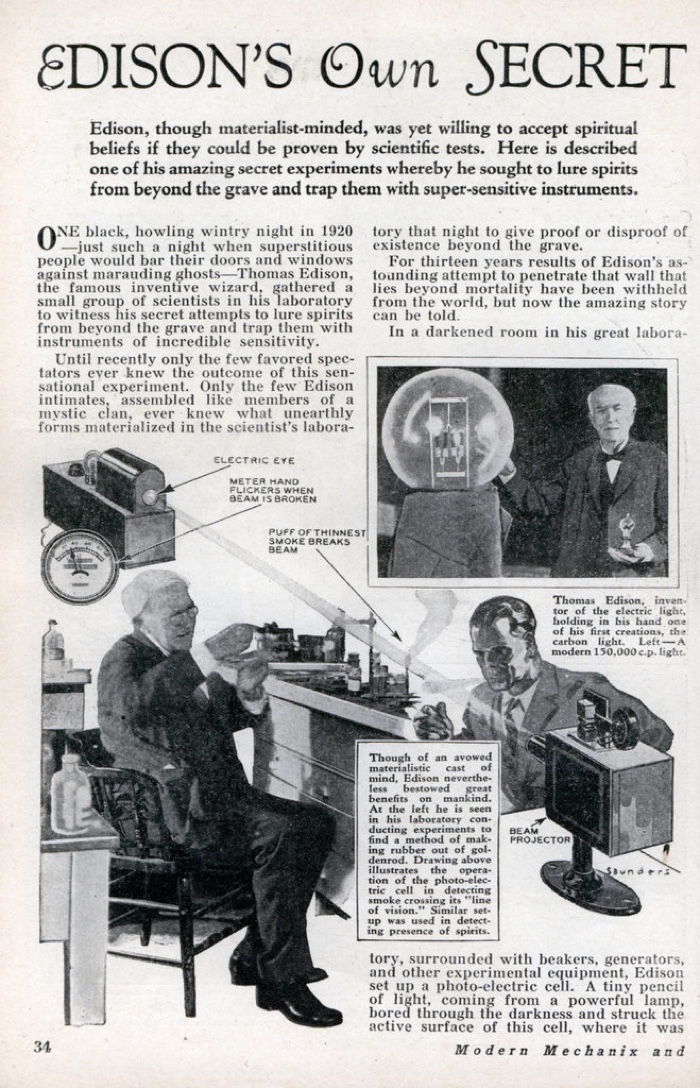
Image via unreal facts
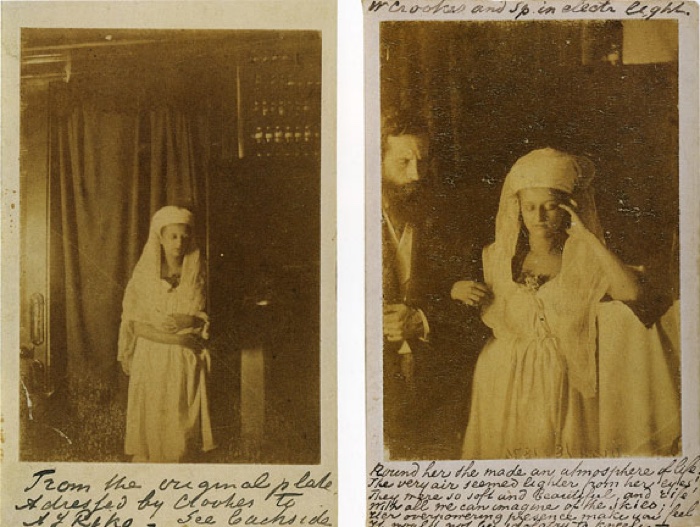
William Crookes, Photos with Katie King
The divination apparatus below appears to have been developed in response to sudden changes in Pende culture, in particular the arrival of colonialists in the region. These changes in society fueled demands for new tools that might afford insight into unfamiliar experiences.
During consultation, the diviner would lay the instrument on his knees with the head facing up while names of individuals suspected of crimes were recited. The galukoji‘s head would spring upward when the culprit’s name was uttered.
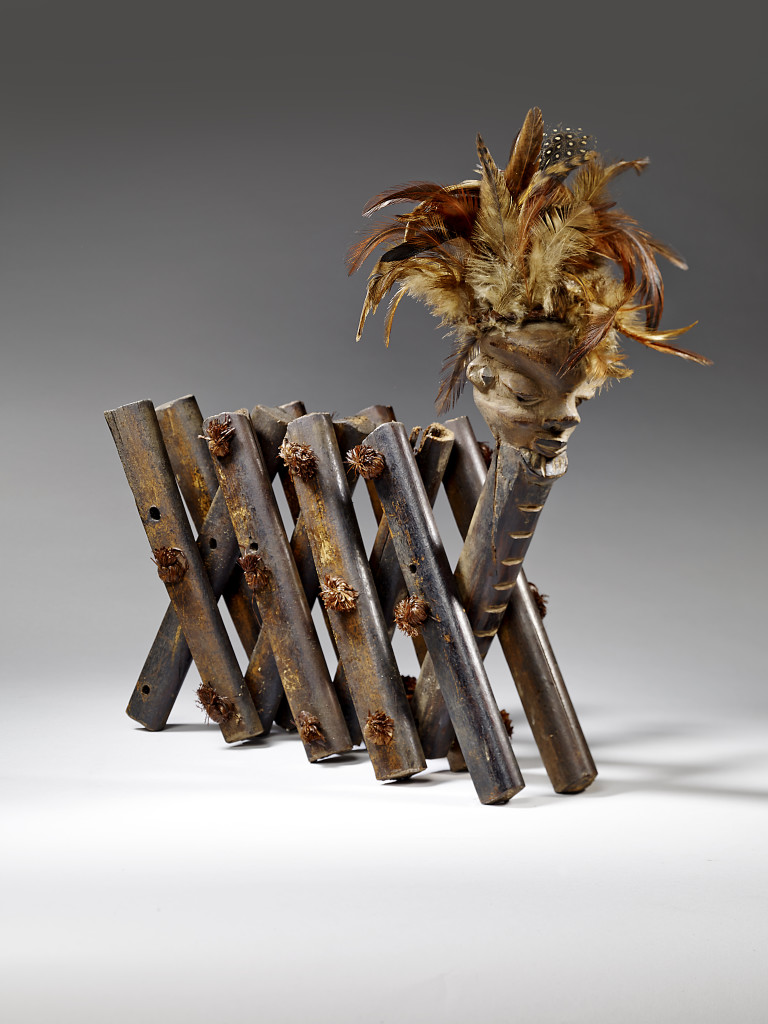
Galukoji, Divinatory instrument, Pende region, Congo, 1920 – 1950. Photo Claude Germain
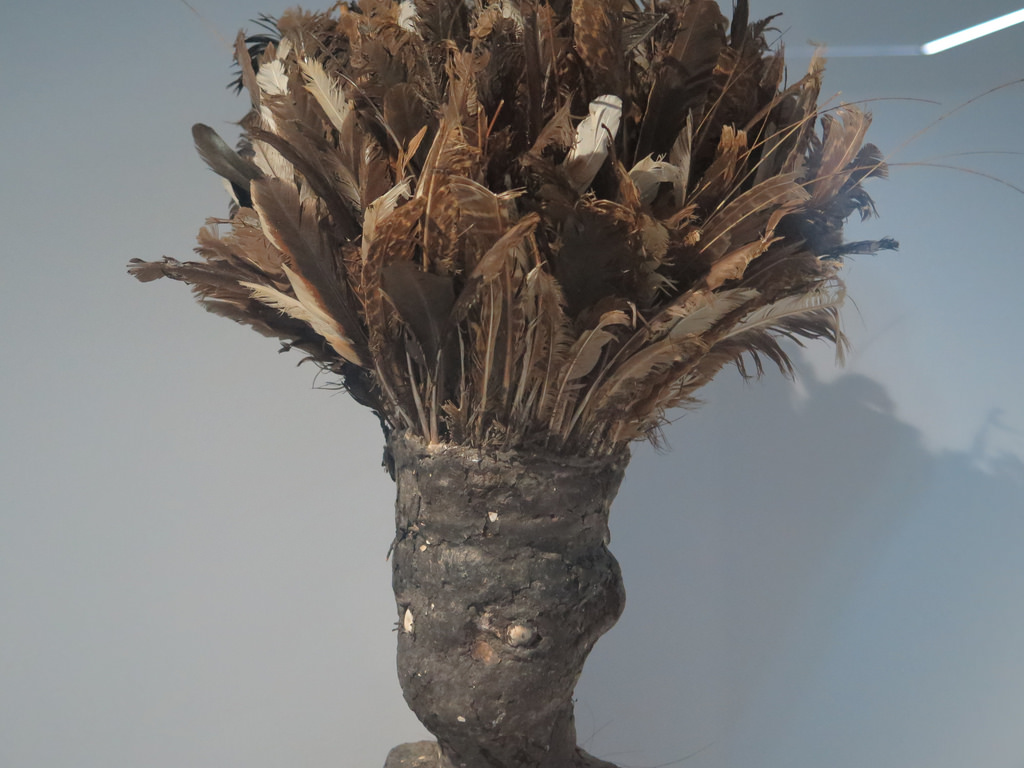
Divination statue (Kafigeledio), Ivory Coast, XIX-early XXTH century. These effigies oracle were manipulated by members of secret societies to detect who was lying
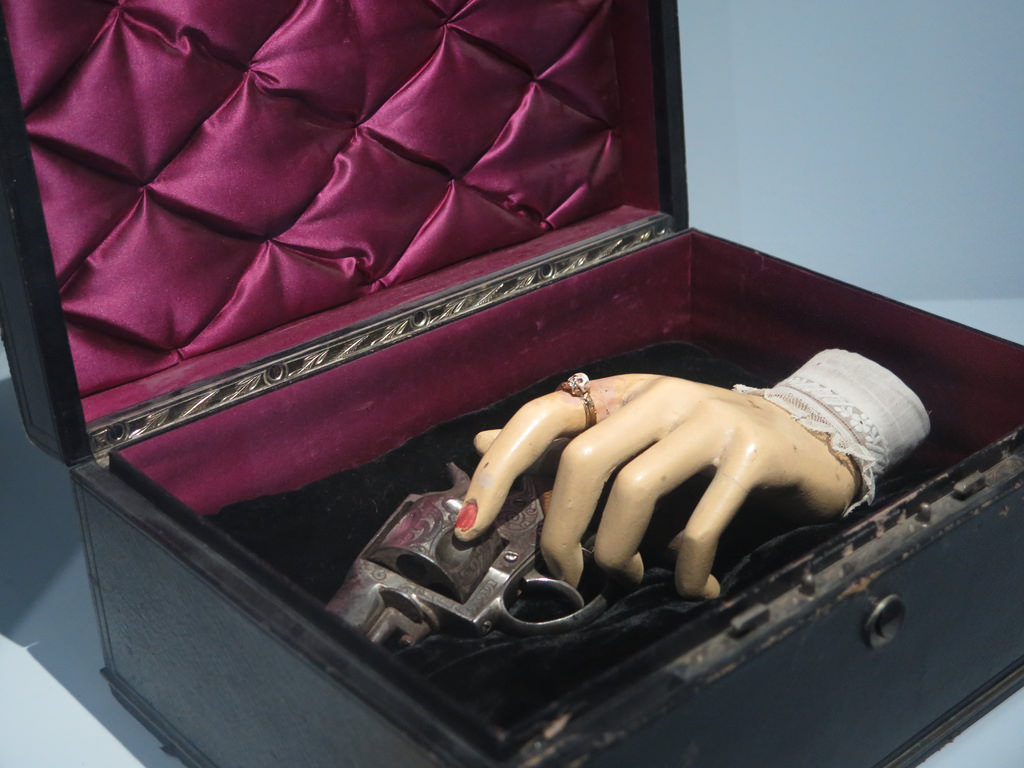
Spirit hand Martinka and Memento mori ring, late XIX and XVIIth century
Used during the cohoba ritual, the tool was used to help the participant vomit before the ceremony and thus helped them purify their body. The participant would then inhale a potent hallucinogen, putting them in a trance that facilitates contact with supernatural beings.
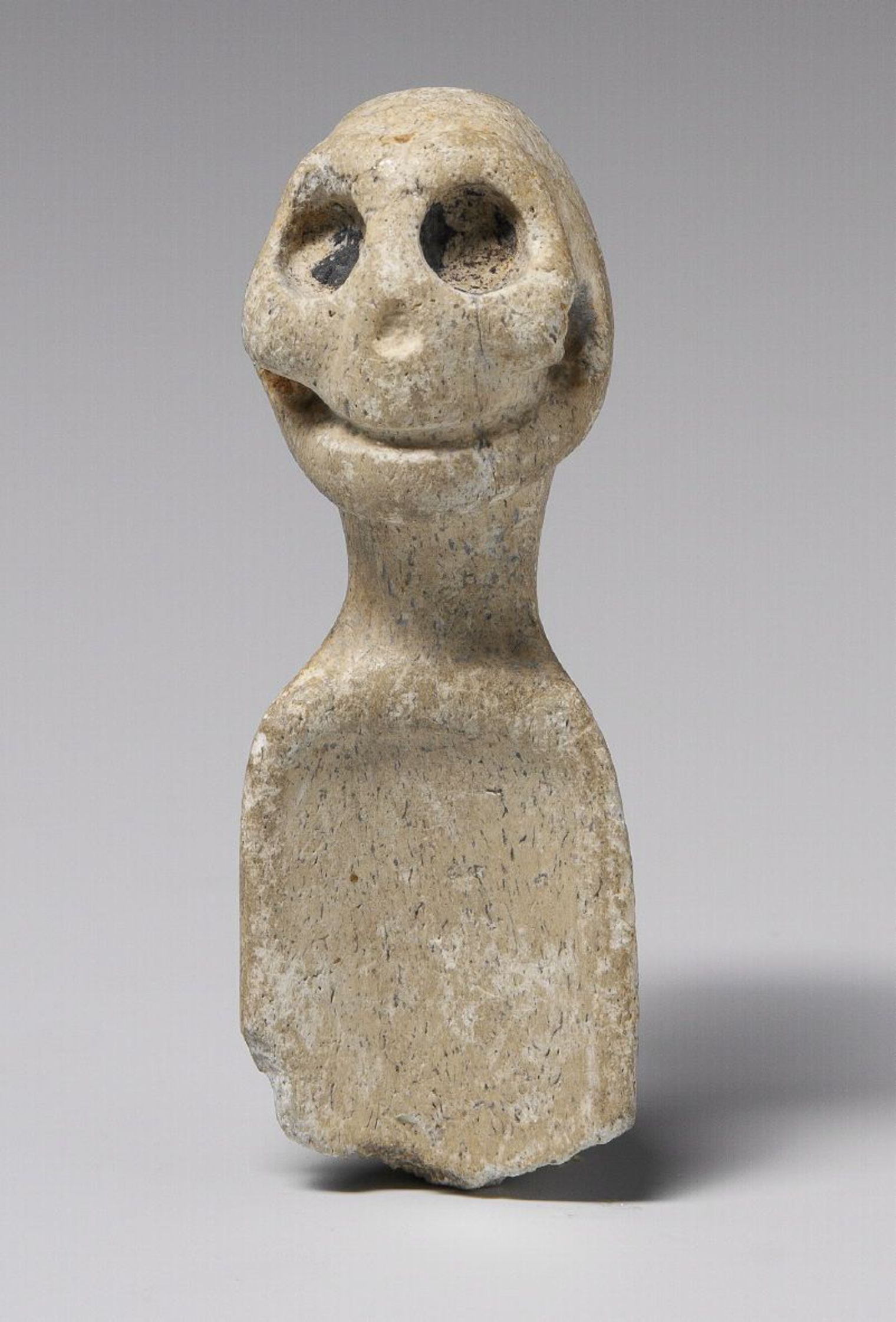
Vomit-inducing spatula, Martinique, circa 1200 – 1492. Photo Patrick Gries
The third chapter in the exhibition studied what robotics professor Masahiro Mori called the Uncanny Valley, the thin line that is crossed by things that appear so human that they end up repelling us. Instead of trying to replicate exactly the human appearance, Mori actually suggested that designers explore zoomorphism or draw inspiration from other art forms (Bunraku theatre, religious statuary, etc.) to produce effects of empathy, attachment and even hypnosis.
This section features Vanuatu marionnettes, prosthesis, mommies that all evoke the human form and seem to both attract and repel the viewer.
Human skull covered with human hair, animal teeth and tinted animal skin. The death raises here a feeling of “uncanny strangeness”.
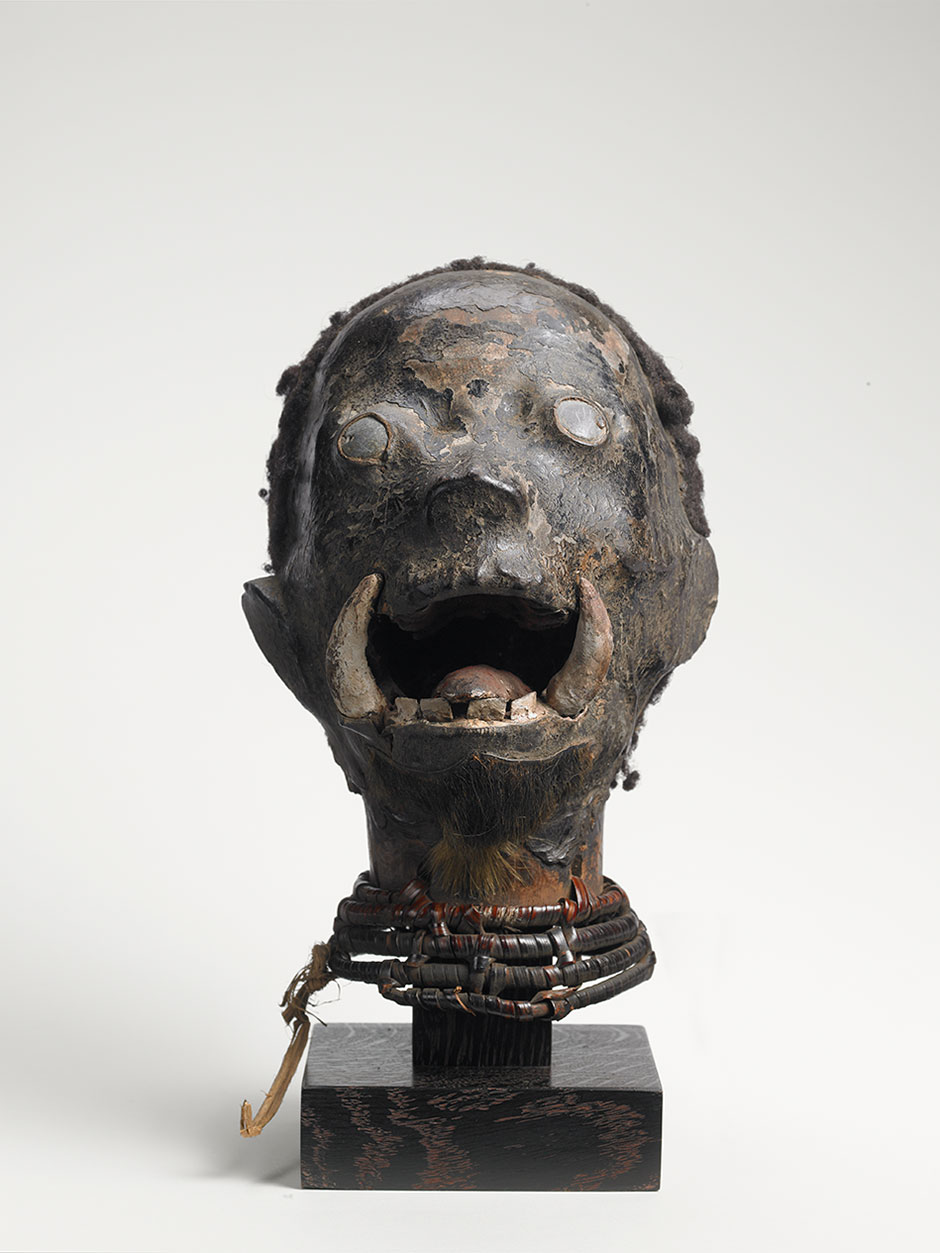
Anthropomorphic crest, Cross River (Africa.) Photo Thierry Olivier, Michel Urtado
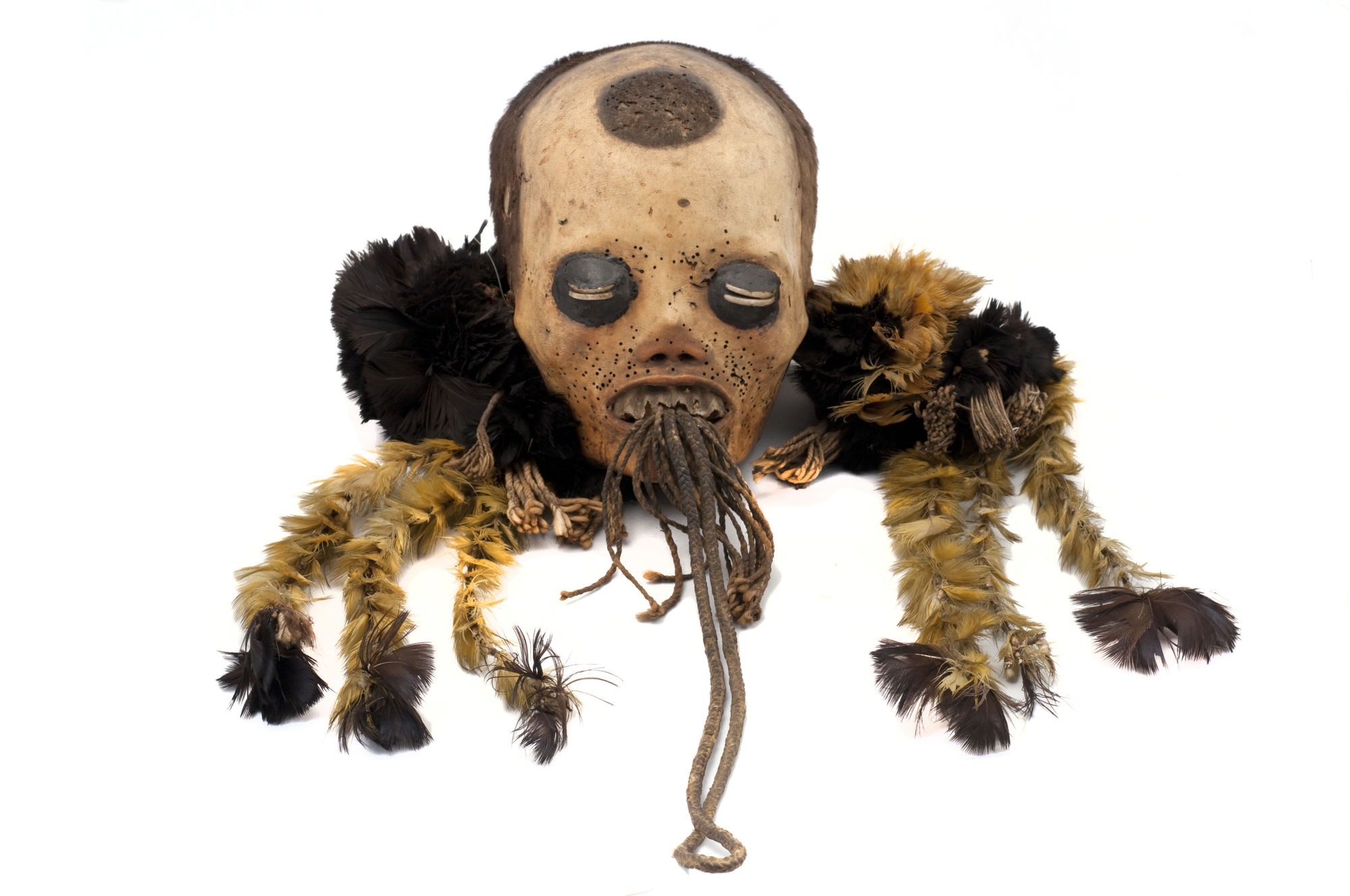
Mummy, undated parched head of Mundurucu Indian, Brazil
Jean Dupuy’s dust sculpture comes to life as soon as it is connected to the heart beats of the visitors. The dust is actually an extremely low-density red pigment called Lithol Rubin that has the ability to remain suspended in air for long periods.
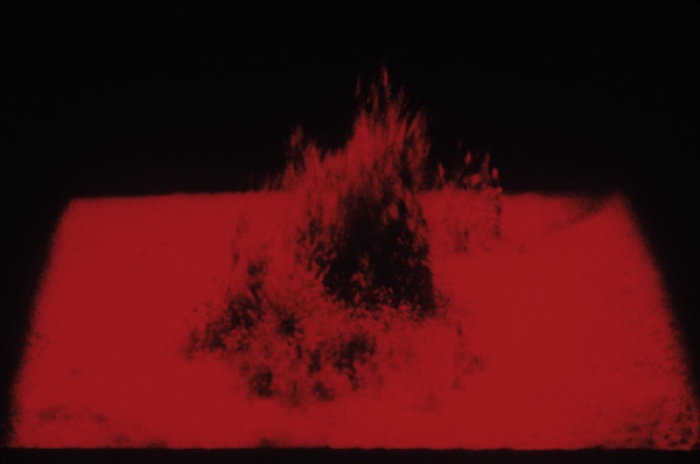
Jean Dupuy, Cone Pyramid (Heart beats dust), 1968 (photo)
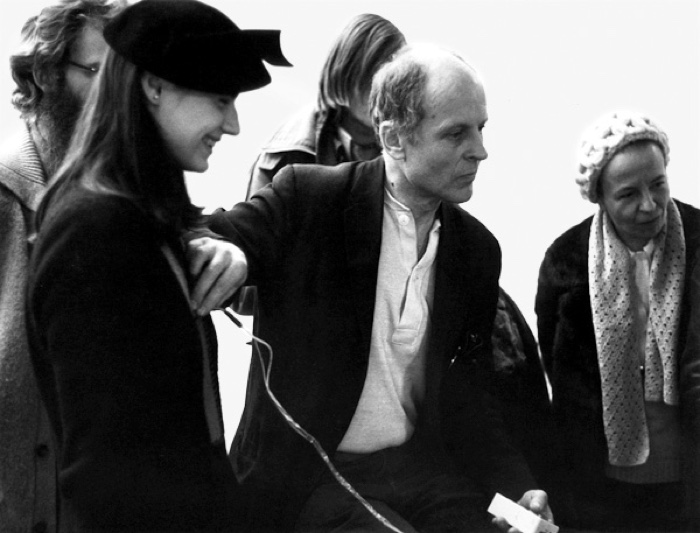
Performance of the piece at the exhibition Für Augen un Ohren, Akademie der Künst, Berlin, 1980 (photo)
Automata of the gods are displayed during religious feasts today in India. The figures are used to capture attention, tell myths or accompany rituals. Their slow and hypnotic gestures put people in a state that prepares to devotion.
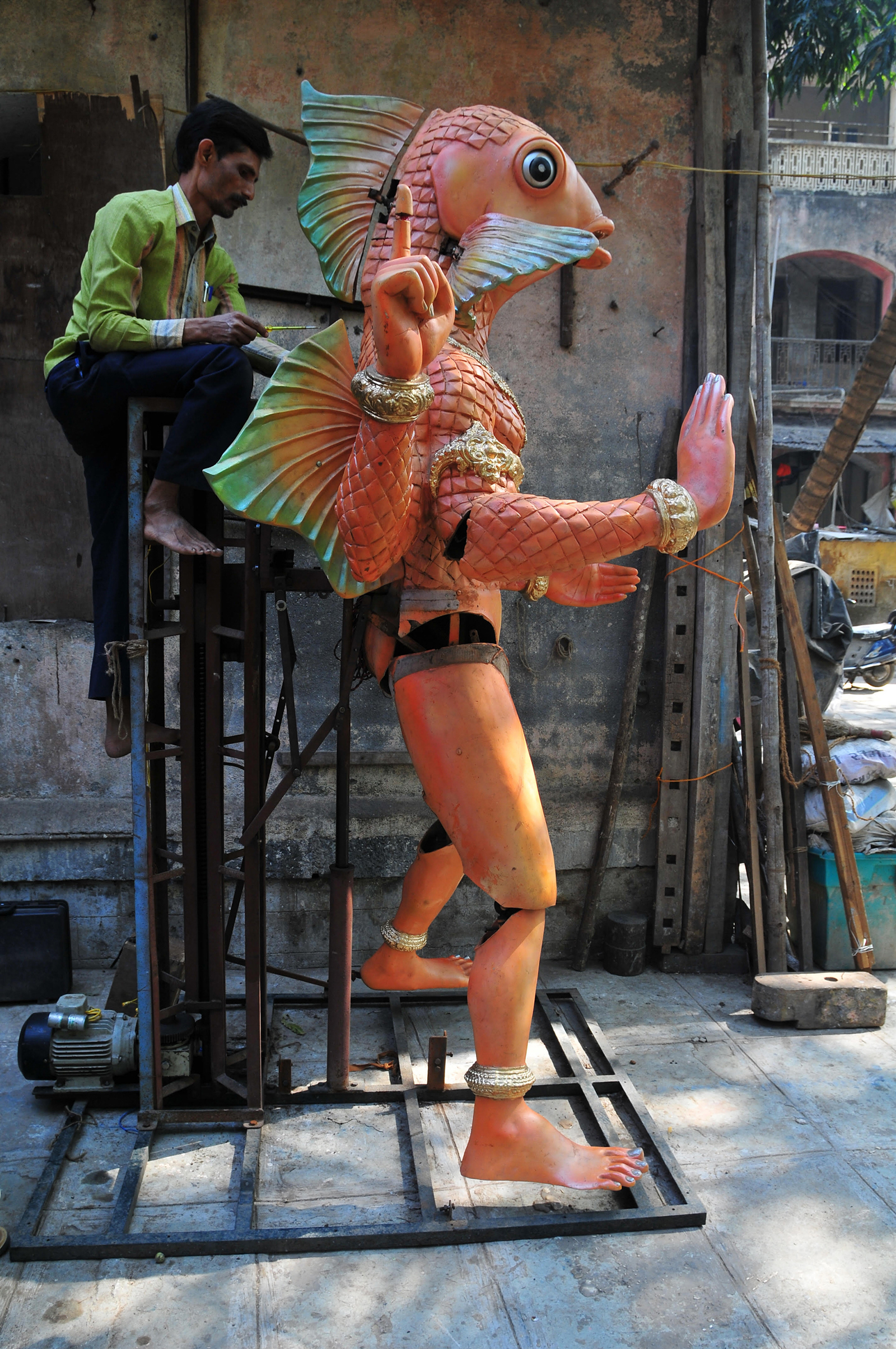
Matsya automaton, avatar of the god Vishnu. Conception Ankush Bhaikar for “Persona. Strangely Human.” Photo Emmanuel Grimaud
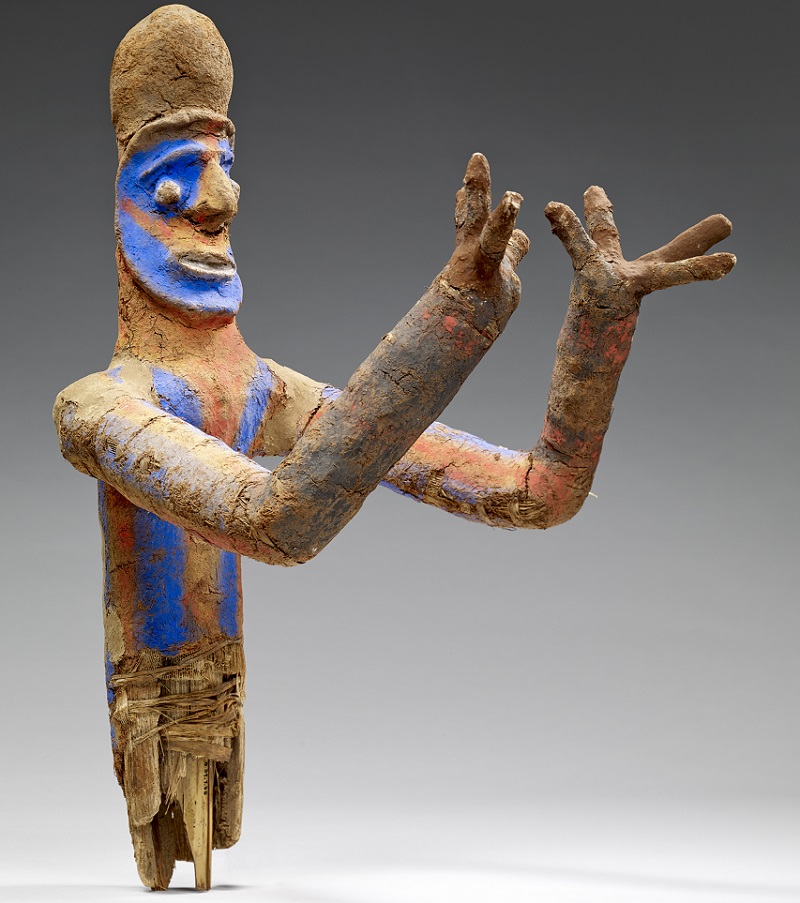
Vanuatu marionnette. Photo Gautier Deblonde © musée du quai Branly
The final part of the exhibition, “Show Home”, invites you to enter a dwelling and meet the interfaces, devices and robots that might one day be part of our family. How shall we cohabit with them?
Some of the pieces on show are the ones you expect to see there: robots, life-like love dolls but you will also discover a collection of phallic amulets and anthropomorphic spoons.
Stan Wannet‘s electro-mechanical installation features a pair of baboons playing a classic gambling trick. The work is a direct reference to both Wolfgang Von Kempelen’s Chess Playing Turk and Hieronymus Bosch’s painting The Conjurer ‘in an attempt to blur the artificial borders between our rational, polite and slightly ambitions selves on the one hand and the more primal, greedy and curious us on the other.’
Stan Wannet, Civilized Aspirations in Art, Monkeys and small time Entrepreneurs
Divinatory robots such as the one below were popular in Mumbai in the 1990s. They were made using discarded Japanese toys. From the sanskrit Bhavishya (“destiny, future”), the robot is an interface to divination, it predicts the future in 3 languages in exchange of a few coins.
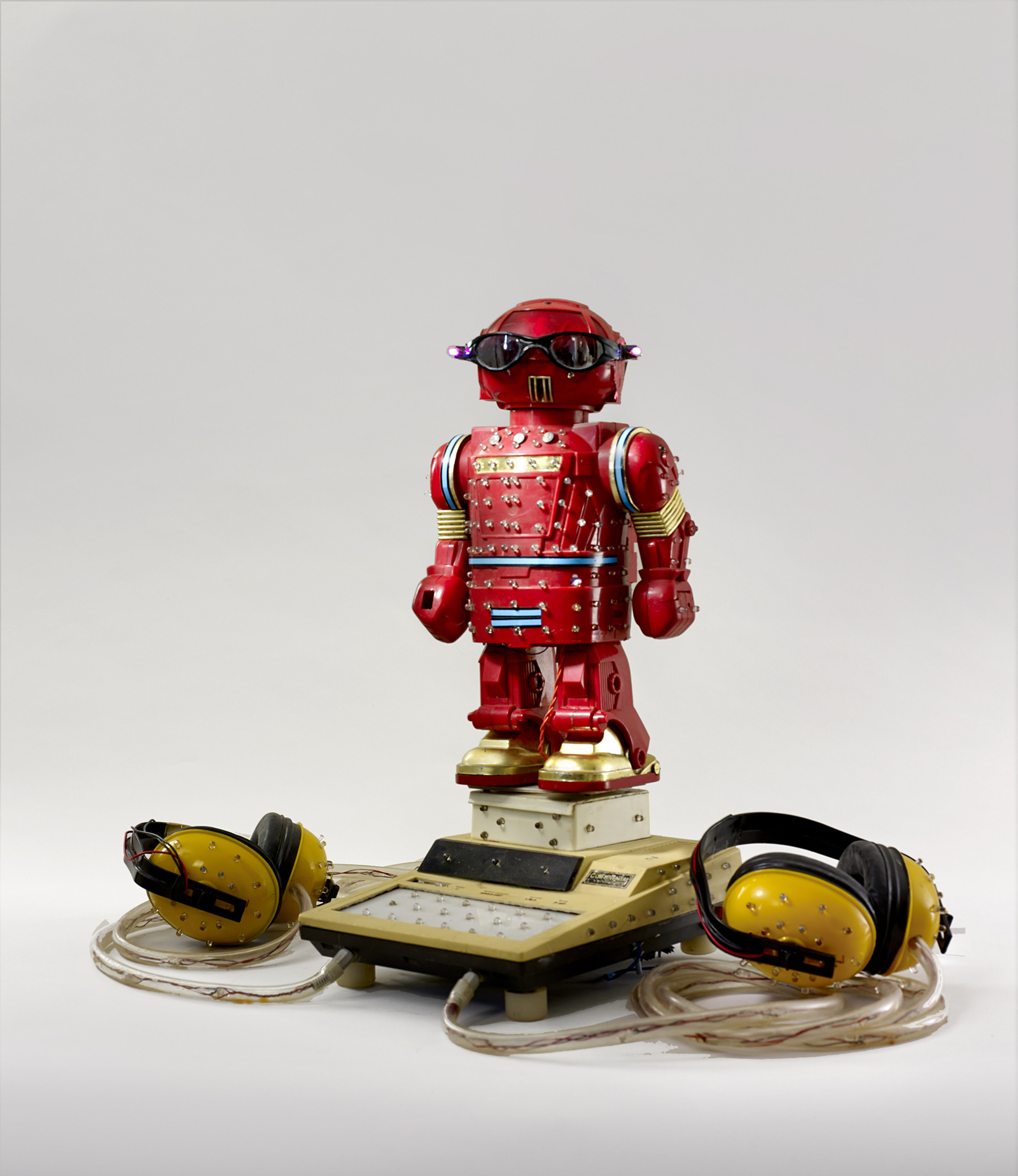
Bhaishyavani, Robot de divination, End of XXth century. Photo Claude Germain
The little sculptures below are made using kitchen tools. They are designed as “real incarnations of gods.” They assist users in their everyday lives, but they can also turn against them.
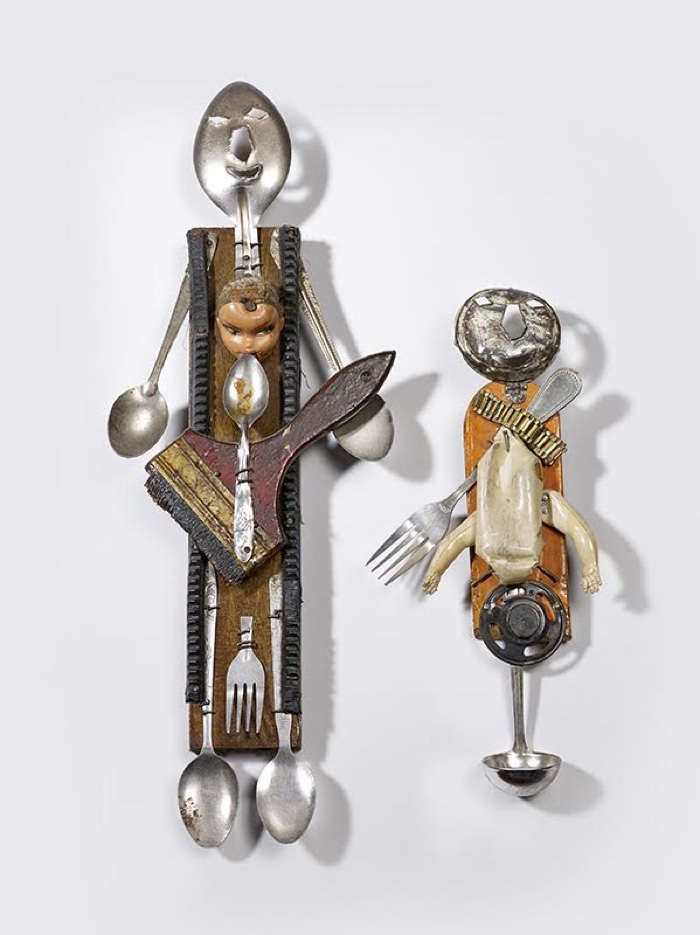
Two Haitian sculptures from the nineteenth century representing the Ogou loa. Photo Claude Germain
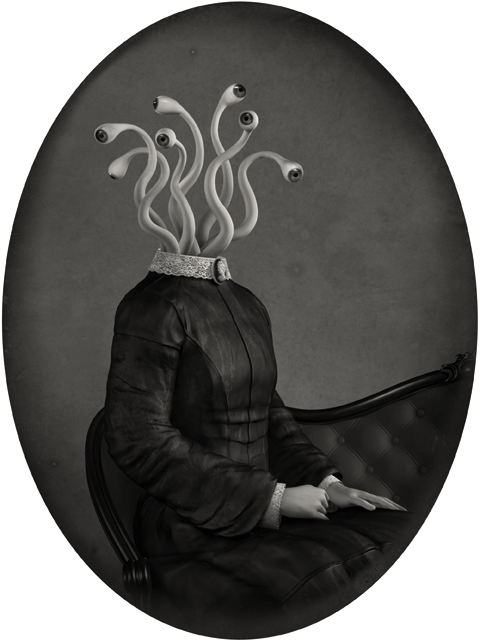
Danny Van Ryswyk, Strange Days Have Found Us
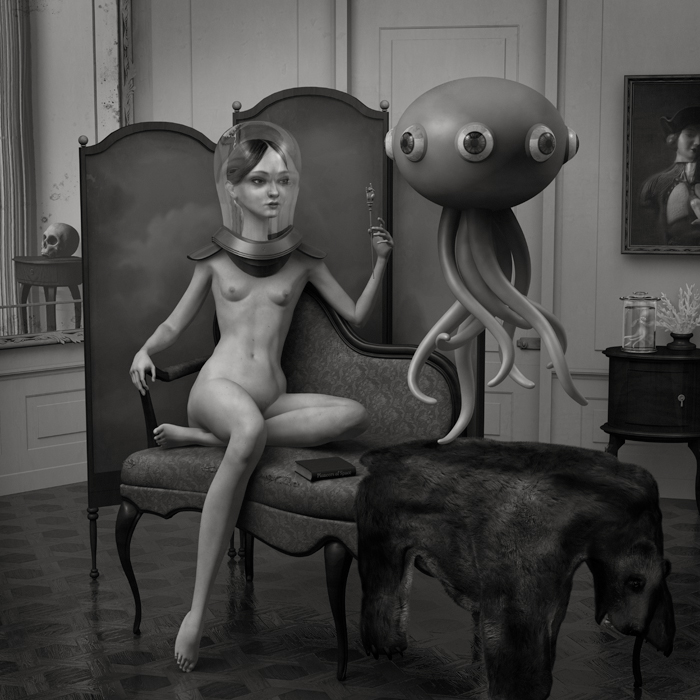
Danny Van Ryswyk, Return of the Venusian, 2015
Some of the images i took during my visit of the exhibition are on flickr.
Persona. Strangely Human remains open at the Musée du Quai Branly in Paris until 13 November 2016.

